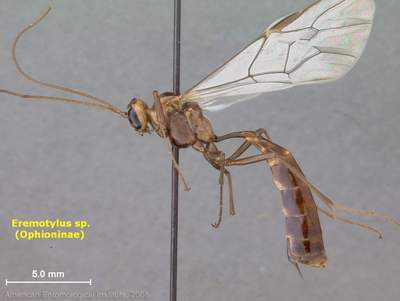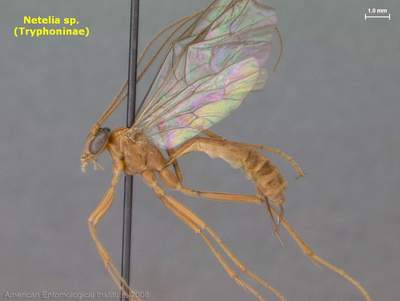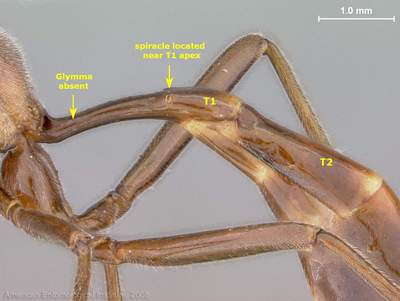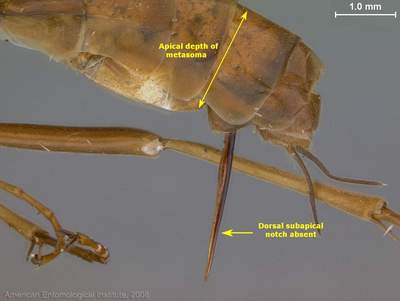
GIN Home
Ichneumonid Morphology
Subfamily Key
Lists of World Genera
Acaenitinae
Brachycyrtinae
Collyriinae
Lycorininae
Ophioninae
Poemeniinae
Rhyssinae
Stilbopinae
Xoridinae

Most ophionines exhibit what Gauld & Huddleston (1976) termed the 'Ophionoid facies': large ocelli, long antennae, and pale yellow-brown color .

Gauld & Huddleston explain that these " . . . characteristics have evolved several times amongst several different groups of Hymenoptera. The Ophionoid facies is found to occur not only within several different subfamilies of Ichneumonidae, but also within the Braconidae, and in the tropics amongst some Aculeate Hymenoptera. The Ophionoid facies is almost invariably confined to nocturnal insects."
The ichneumonids most commonly confused with ophionines belong to the tryphonine genus Netelia

Ophionines and Netelia spp. may be readily separated by the following characters:
Fore wing
The areolet is absent in ophionines

|
but present in Netelia spp.

|
First metasomal segment
Ophionines lack a glymma and the spiracle is near the apex of T1.

|
Netelia spp. have a prominent glymma and the spiracle is in front of the midpoint of T1.

|
Ovipositor
References
- Gauld, I.D. & Huddleston, T. 1976. The Nocturnal Ichneumonoidea of the British Isles, including a key to genera. Entomologist's Gazette, 27: 35-49.
Site credits and citation. Questions? E-mail: aei[at]aei.cfcoxmail.com

